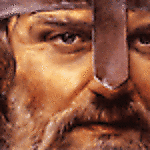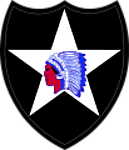1⁄24Rusting, Chipping and Weathering
47
Comments
time for some real color
The best part!!! PAINT!!! I have decided to use a 2 color system of painting. This means that I will lay one layer of paint, chipping fluid and salt again and then paint with another color. This will enhance the depth a lot. Using Tamiya's Medium Blue first, I laid down a coat making sure to be a little heavier in the areas I wanted shaded darker, and a lighter coat to just a dusting in the sun bleached top and flat surface panels.
Using Tamiya's Medium Blue first, I laid down a coat making sure to be a little heavier in the areas I wanted shaded darker, and a lighter coat to just a dusting in the sun bleached top and flat surface panels.

 You can see in this last shot that the salt does react a bit with the paint and has a slight faded appearance. This will actually help me later.
Next I will be adding more chipping fluids, in the same placement as the first time.
You can see in this last shot that the salt does react a bit with the paint and has a slight faded appearance. This will actually help me later.
Next I will be adding more chipping fluids, in the same placement as the first time.
 While still wet, I applied a little more salt to some areas.
While still wet, I applied a little more salt to some areas.
 Now it is time to add the second layer of paint. For this stage I decided to use Tamiya's Light Sea Grey. This was laid down where I wanted to accent and/or highlight panels and mostly top surface panels and areas that would be bleached from the sun.
Now it is time to add the second layer of paint. For this stage I decided to use Tamiya's Light Sea Grey. This was laid down where I wanted to accent and/or highlight panels and mostly top surface panels and areas that would be bleached from the sun.
 Up next I will be removing the salt and exposing the multi layers of paint and rust. in this next picture we see the doors before the salt is removed, and the hood. I chose not to salt the hood. I will hit this section with a stiff bristle brush to show this effect.
Up next I will be removing the salt and exposing the multi layers of paint and rust. in this next picture we see the doors before the salt is removed, and the hood. I chose not to salt the hood. I will hit this section with a stiff bristle brush to show this effect.
 Up next I will show the removal of the salt and some heavy chipping to the hood.
Up next I will show the removal of the salt and some heavy chipping to the hood.
 With a good, stiff bristled brush to brush and somewhat stipple the granules of salt away. If they become stubborn and problematic, a damp (not wet) brush should loosen it up and knock it away.
With a good, stiff bristled brush to brush and somewhat stipple the granules of salt away. If they become stubborn and problematic, a damp (not wet) brush should loosen it up and knock it away.
 Next, I do want to more or less wet the area I want to chip and scrub.
Next, I do want to more or less wet the area I want to chip and scrub.
 Using the stiff bristled brush again, I stipple, scrub, stab pick away at the paint as the water softens the layers of color.
Using the stiff bristled brush again, I stipple, scrub, stab pick away at the paint as the water softens the layers of color.
 In nooks and crannies you will need to detail the water into the crevasses. If the paint is being stubborn or it has been a day or so from the time of painting, some aggressiveness will be needed. I suggest mixing some standard alcohol with water 50/50 for starters. With a fine tip brush use it like a pin wash on the area you wish to remove. Then a little scrub with a cotton swab (bud) or stipple with a brush and the lovely rust color will begin to show through in the crack.
In nooks and crannies you will need to detail the water into the crevasses. If the paint is being stubborn or it has been a day or so from the time of painting, some aggressiveness will be needed. I suggest mixing some standard alcohol with water 50/50 for starters. With a fine tip brush use it like a pin wash on the area you wish to remove. Then a little scrub with a cotton swab (bud) or stipple with a brush and the lovely rust color will begin to show through in the crack.
 With a nice collection of unsalted model pieces I chose to run a filter of sorts over everything. This blends some colors and brings others out, not to mention cleaning up the whole salting mess. Remember that you want to apply just a filter, not a wash. This is thinner than a full strength wash. You can always run more coats if you think it is needed. I only applied one using AK's Brown Blue Wash. I did not fully mix the contents. You can get the same result from mixing oil paint with thinner between 60% and 80% thinner to paint. You are just blending the color with this coat.
With a nice collection of unsalted model pieces I chose to run a filter of sorts over everything. This blends some colors and brings others out, not to mention cleaning up the whole salting mess. Remember that you want to apply just a filter, not a wash. This is thinner than a full strength wash. You can always run more coats if you think it is needed. I only applied one using AK's Brown Blue Wash. I did not fully mix the contents. You can get the same result from mixing oil paint with thinner between 60% and 80% thinner to paint. You are just blending the color with this coat.
 This is what this looks like with the chipping complete and one filter applied.
This is what this looks like with the chipping complete and one filter applied.





 Here is a mock up to check if I am on the right track here.
Here is a mock up to check if I am on the right track here.




Comments
I know it's been a while since the last post here, but I just wanted to let you know that I still refer people to your tutorial Todd and they have yet to give anything but very positive feedback on it regardless of what hobby discipline they come from.
JUN 25, 2013 - 05:08 AM
Thank you very much Jeremy! I am happy to see it useful for some. Most of the techniques are really simply to use they just take some practice to get the feel down. Even better, is when someone takes something and adapts their own way, maybe even coming up with newer techniques or just improving on the old ones. Circle of learning!! Thanks again!
JUN 25, 2013 - 07:55 AM
Hello Richard,
AK's Heavy Chipping Fluid works pretty much the same as other chipping medium layers:
1 - Make sure your base paint has been sealed with a clear coat.
2 - Spray on the chipping medium (Vallejo, AK, AMMO, Hair Spray...)and allow to dry (should only take a few minutes)
3 - Spray top coat of acrylic paint you desire to chip and allow to dry...not cure! 10 -15 minutes...enough to clean up your AB.
4 - Using a damp (Not Wet) with water brush apply a light single coat over the area you want to start in...typically no the entire model at once.
5 - Use any number of tools to aid in the removal of top coat paint to the desired effect you want; paint brushes, toothpicks, cotton swabs, etc
It is best to test things out on an old shelf queen until you get the hand of how to obtain different looks.
AUG 29, 2014 - 09:38 PM
I just spent a thoroughly enjoyable hour reading through this. Highly informative and well documented with word and pictures.
J
OCT 25, 2014 - 04:35 AM
I seemed to miss your post. Ace in Sept Richard. ..thanks
Thank you J. ..glad you enjoyed it!
OCT 25, 2014 - 05:35 AM
I realize this is an old thread. I was referred to it by a friend. There are several missing images on the first page. Is there a way you can edit the article and add the missing images?


AUG 15, 2015 - 11:22 PM
Thanks for the heads up on this Ivan! Not too sure what happened here as the pictures are loaded to the site's servers...I will dig a bit and see what I can turn up to correct his!
Cheers,
T
AUG 15, 2015 - 11:46 PM
Copyright ©2021 by Todd Michalak. Images and/or videos also by copyright holder unless otherwise noted. The views and opinions expressed herein are solely the views and opinions of the authors and/or contributors to this Web site and do not necessarily represent the views and/or opinions of Armorama, KitMaker Network, or Silver Star Enterrpises. All rights reserved. Originally published on: 2012-08-19 00:00:00. Unique Reads: 57192











